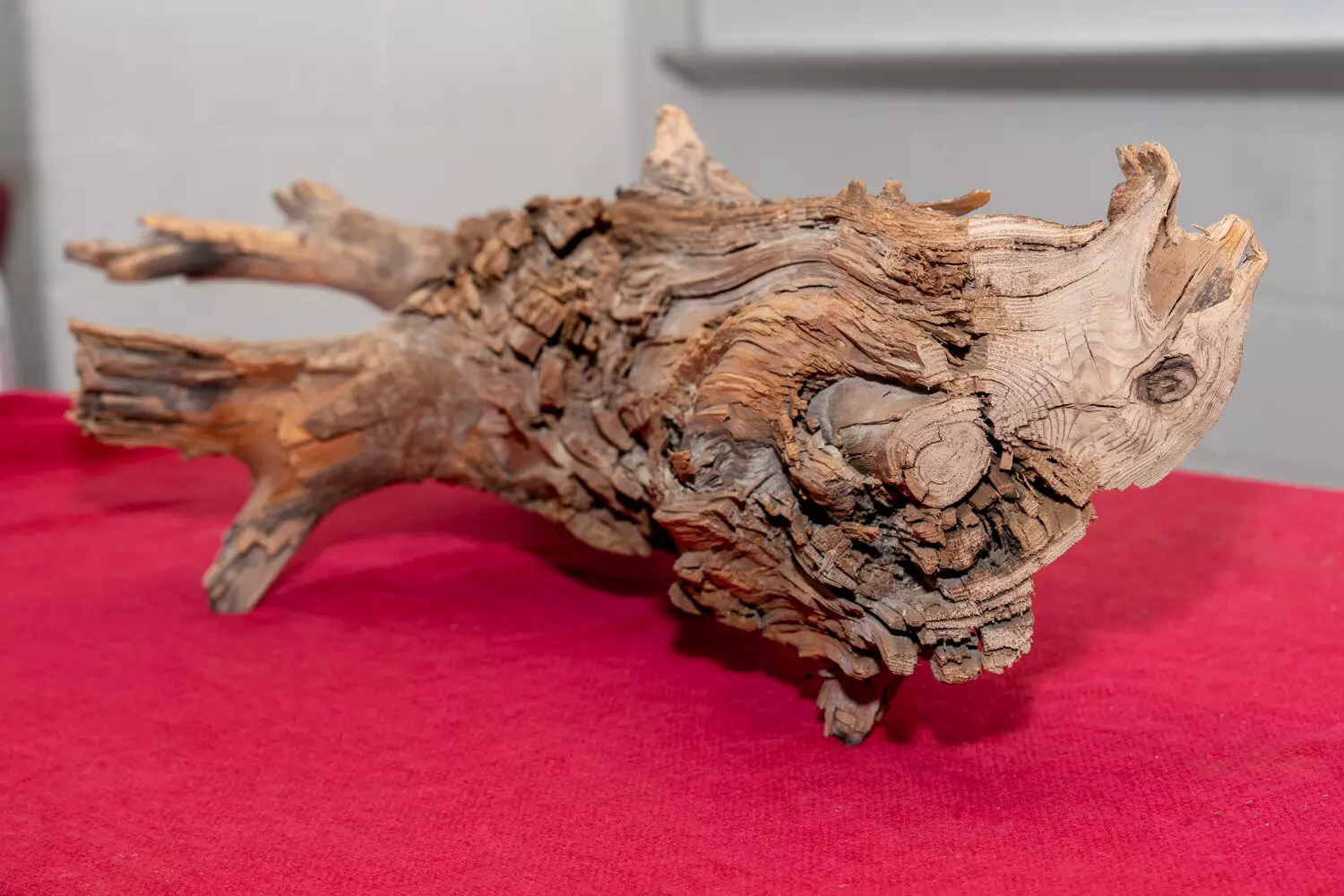In a groundbreaking study published in the journal Science, researchers from the University of Maryland have unveiled how the remarkable preservation of a 3,775-year-old log could inform future climate change strategies. Led by Professor Ning Zeng, the team embarked on an exploration of the log’s unique environmental imprint and the surrounding soil ecosystem. Their findings, released on September 27, 2024, spotlight the exceptional role of low-permeability clay soils in maintaining the log’s integrity, allowing it to retain less than 5% of its original carbon dioxide content over millennia. This preservation challenge has broader implications for climate change mitigation as it reveals insights that could revolutionize sustainable wood management.
The research is set against the backdrop of increasing interest in innovative techniques for carbon sequestration—strategies aimed at reducing atmospheric carbon dioxide levels to combat global warming. One such emerging method, known as “wood vaulting,” involves burying wood that is not commercially viable—such as diseased timber, neglected furniture, and construction waste—deep underground to minimize its decomposition. Trees play a crucial role in absorbing carbon dioxide throughout their lifecycles; however, once they decay, they release substantial amounts of this potent greenhouse gas back into the atmosphere, counteracting preservation efforts. Therefore, finding sustainable methods to store wood not only ensures that carbon remains sequestered but also helps in managing timber waste responsibly.
The ancient log unearthed during a pilot wood vaulting project in Quebec serves as an emblem of this study. Zeng’s serendipitous discovery of the Eastern red cedar log—identified by four ecologists from McGill University—is pivotal. Zeng expressed the awe of their find, highlighting its well-preserved condition, which underscored the blog’s potential in informing climate solutions.
Past investigations into ancient wood samples have largely neglected the surrounding soil, an oversight that significantly weakens understanding of long-term wood preservation. A comprehensive analysis of the log’s preservation factors calls for a shift in focus toward the environmental conditions that enabled such longevity. Zeng praised the collaborative effort as vital in elucidating how specific soils, particularly clay variants, create an anaerobic environment that thwarts decomposition by limiting oxygen and thwarting pests and fungi. This shift in perspective opens avenues for future research dedicated to establishing engineered wood vaults anchored in ecological principles.
A 2021 study, led by Distinguished University Professor Liangbing Hu from UMD’s Department of Materials Science and Engineering, provided insight into the structural and chemical characteristics of the ancient log. A comparative analysis against newly harvested Eastern red cedar revealed that the preserved sample had suffered minimal carbon loss, reinforcing the belief that the clay soil’s properties were instrumental in its conservation.
Clay soil’s low permeability dramatically slows the movement of air and moisture, factors critical in fostering conditions inhospitable to destructive microorganisms. This unique advantage suggests that deploying wood vaulting techniques in regions with similar soil types could yield successful results, establishing a low-cost and viable method for carbon sequestration while simultaneously addressing the timber industry’s waste.
While wood vaulting emerges as a promising contributor to climate change mitigation, Zeng is keen to emphasize its best use in conjunction with a comprehensive array of solutions aimed at reducing greenhouse gas emissions. An interdisciplinary approach that complements traditional strategies including tree planting could yield significant outcomes in combating climate change. Zeng’s current mission is refining the wood vaulting technique, ensuring its operationalization in real-world scenarios.
As research in this area advances, the implications for sustainable forestry, carbon management, and climate resilience are profound. The collaboration between scientists and local authorities aims to transform what once lingered as a curious geological finding into a tangible strategy to address the climate crisis.
Zeng’s excitement underscores the journey ahead—an infusion of ancient wisdom into modern science. As the team delves deeper into wood vaulting, the anticipation of bridging past techniques with contemporary strategic frameworks holds promise. This study not only brings attention to the hidden potential of the old but also mobilizes action towards innovative approaches to a pressing global challenge. Humanity’s adaptive capacity may just find solutions nestled beneath the soil, waiting to be unearthed and recontextualized for a sustainable future.

